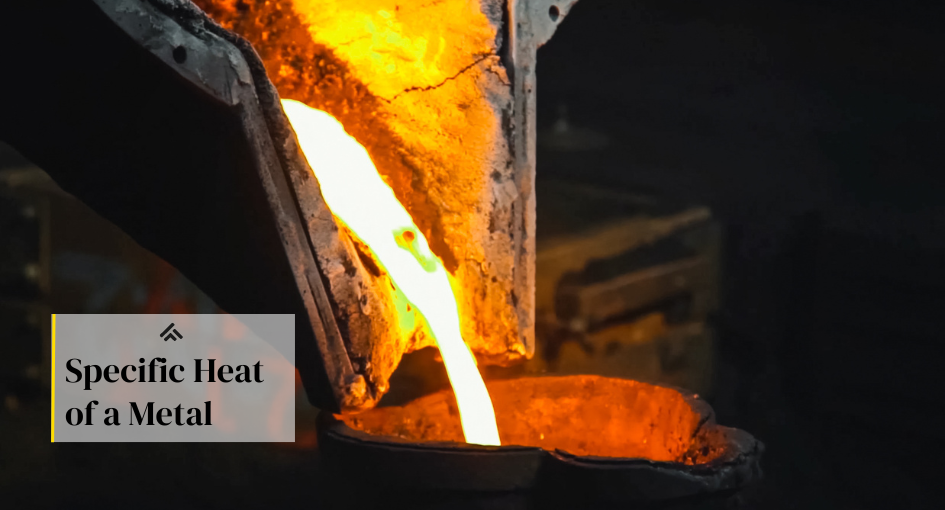
Are you working on a construction project and need to determine the specific heat of metal materials? Understanding this important factor is crucial for estimating the amount of energy needed to manipulate and shape the metal, as well as predicting its thermal behavior.
However, finding accurate information on specific heat values can be challenging, especially with various types of metals available in the market. Fear not, as I have gathered all the essential tips and tricks for accurately calculating the specific heat of any metal for your next takeoff estimate.
I will break down what specific heat is and why it is crucial in Metal Estimating Takeoff. So if you’re ready to learn some practical tips and tricks on how to find the specific heat of any metal, read on!
Steps to Determine Specific Heat of a Metal
Finding the specific heat of a metal is an important task in many fields such as physics, engineering, and materials science. The process typically involves an experimental method using calorimetry. Here’s a basic outline of how to find the specific heat of a metal:
Equipment Needed
-
Calorimeter: A device used to measure changes in thermal energy.
-
Thermometer: To measure temperature changes.
-
Balance: To weigh the metal sample.
-
Metal sample: The metal whose specific heat you want to determine.
-
Water: A substance with a known specific heat capacity.
-
Heat source: Such as a burner to heat the metal sample.
Weigh the Metal Sample:
Utilize the balance, which is a precision measuring instrument, to accurately determine the mass of the metal sample denoted as m_metal. This step is crucial in the process to ensure precise measurements and reliable results in the analysis of the metal sample.
Heat the Metal:
To experiment, carefully heat the metal sample to a specific known temperature that is higher than the initial temperature of the water present in the calorimeter. This step is crucial to ensure accurate measurements and observations during the process.
Measure Initial Temperatures:
To begin the experiment, carefully measure and record the initial temperature of the water in the calorimeter, denoted as T_water_initial. Subsequently, measure the temperature of the heated metal right before introducing it into the calorimeter, referred to as T_metal_initial.
Combine Metal and Water:
Swiftly and carefully transfer the heated metal from its source into the calorimeter filled with water, ensuring minimal heat loss to the surrounding environment. This step is crucial to accurately measure the heat exchange during the experiment.
Stir and Record Final Temperature:
Stir the mixture gently using a glass rod to ensure thorough mixing. Wait patiently until the temperature stabilizes, indicating thermal equilibrium between the metal and water. At this point, carefully record this stable temperature as the final temperature (T_final) for both the metal and the water in your experiment log.
Calculate the Specific Heat:
Use the principle of conservation of energy and the formula for specific heat to calculate the specific heat (c_metal) of the metal. The heat lost by the metal will be equal to the heat gained
by the water:
[ q_{metal} = -q_{water} ]
Since ( q = mcDelta T ), where ( m ) is mass, ( c ) is specific heat, and ( Delta T ) is the temperature change, the equation can be rewritten as:
[ m_{metal}c_{metal}(T_{final} – T_{metal_initial}) = -m_{water}c_{water}(T_{final} – T_{water_initial}) ]
Rearrange the formula to solve for ( c_{metal} ):
[ c_{metal} = frac{-m_{water}c_{water}(T_{final} – T_{water_initial})}{m_{metal}(T_{final} – T_{metal_initial})} ]
Note: The specific heat capacity of water (( c_{water} )) is approximately 4.18 J/g°C.
Precautions
-
Ensure minimal heat loss to the surroundings during the transfer of the heated metal to the calorimeter.
-
Assume that the calorimeter perfectly insulates the mixture, though, in practice, some corrections may be necessary for heat loss.
This experiment relies on the law of conservation of energy and provides a practical method for determining the specific heat capacity of a metal. By carefully following the steps and ensuring accurate measurements, one can derive the specific heat, which is crucial for various applications in science and engineering.
To read more articles visit IncNewsBlogs
Conclusion
Finding the specific heat of a metal may seem like a daunting task at first, but with the right tools and techniques, it can be easily done. I have explored the key steps and equations needed to accurately determine this important physical property. We must continue learning and experimenting with different elements as it allows us to expand our knowledge and further our research in all areas of science. The specific heat of a metal may just be one small piece of information in the vast world of materials science, but its impact is significant and far-reaching. So go ahead and put these methods into practice who knows what discoveries you may uncover!








